(325) I visit Gokakudo
文字数 3,385文字
In the Edo period, there was a saying, "There are three things that are too much in Yatabe: Fudo Namiki, Hirose Shutaku, and Iizuka Igashichi."
Yatabe means the Yatabe Domain. It was the only domain in Tsukuba City that survived until the end of the Edo period, though it was a very small one. "Too much" means "something too precious for one to be worthy of ", or "something that is too good to waste".
1) Fudo Namiki (不動並木 a row of pine trees in Fudo-cho)
In Yatabe, there used to be about 200 pine trees (Fudo Namiki) along the 200 m road in Fudo-cho.
An explanation board says,
"About 300 years ago, when Hosokawa Okimasa (細川興昌), the lord of the Yatabe Domain, moved his residence from Motegi in Tochigi Prefecture to Yatabe, he planted pine trees at this Yatabe area for Sankinkotai (参勤交代, a system under which feudal lords in the Edo period were required to spend every other year in residence in Edo).”
In 1957, Fudo Namiki became a natural monument designated by Ibaraki Prefecture.
In November 2003, someone who visited Fudo Namiki wrote, "Now only the last pine tree remains". But nowadays all of the pine trees have died.
In Yatabe, there used to be another famous pine tree on Chitose Street. But it also died in 1993.
2) Hirose Shutaku (広瀬周度)
Hirose Shutaku was born in 1782 as the eldest son of Shuhaku (広瀬周伯), a doctor of the Yatabe clan.
While also serving as a clan doctor, Shutaku pursued Dutch studies under his father, who had studied under Sugita Genpaku.
Shutaku was well versed in calligraphy and painting. In Hanare Kannon-do, there is a ceiling mural he painted when he was 16 years old.
3) Iizuka Igashichi (飯塚伊賀七)
Iizuka Igashichi (April 23, 1762 – December 24, 1836) was a village headman and inventor.
Igashichi's works include Gokakudo(a pentagonal pillar building), Fuse Benten Bell Tower, a Japanese clock (Based on a Western mechanical clock which was improved by incorporating unique Japanese technology), and an elaborate map called “Yatabe Ezu (1788)”. The map was as large as two tatami mats and was made before Ino Tadataka made the first map in 1800.
It is said that Igashichi also invented a large abacus, a sake-buying doll, a tea-serving doll, and a human-powered airplane, though none of them remain today.
Iizuka Igashichi is called "Karakuri Igashichi", but recently some people call him "Da Vinci of Tsukuba".
I visited the mysteriously-shaped Gokakudo. There used to be a Japanese clock in Gokakudo, but it has been moved to the local museum. Please note that Gokakudo is located on the residential land of the Iizuka family and cannot be entered inside.
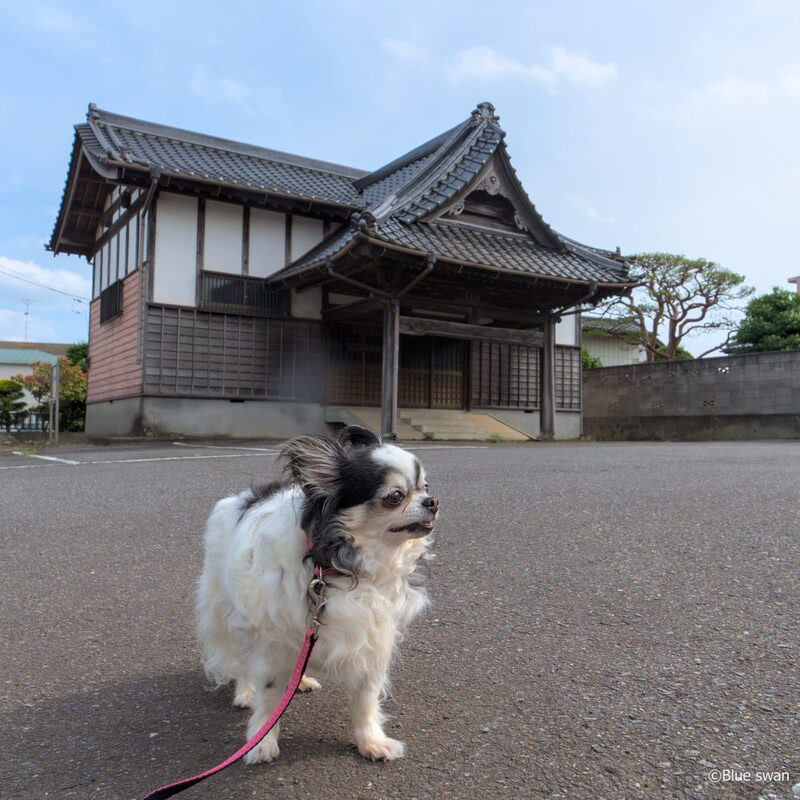
① I am in front of “Yatabe Domain Jinya”, the only remaining structure of the Yatabe Domain. The building is now a public hall.
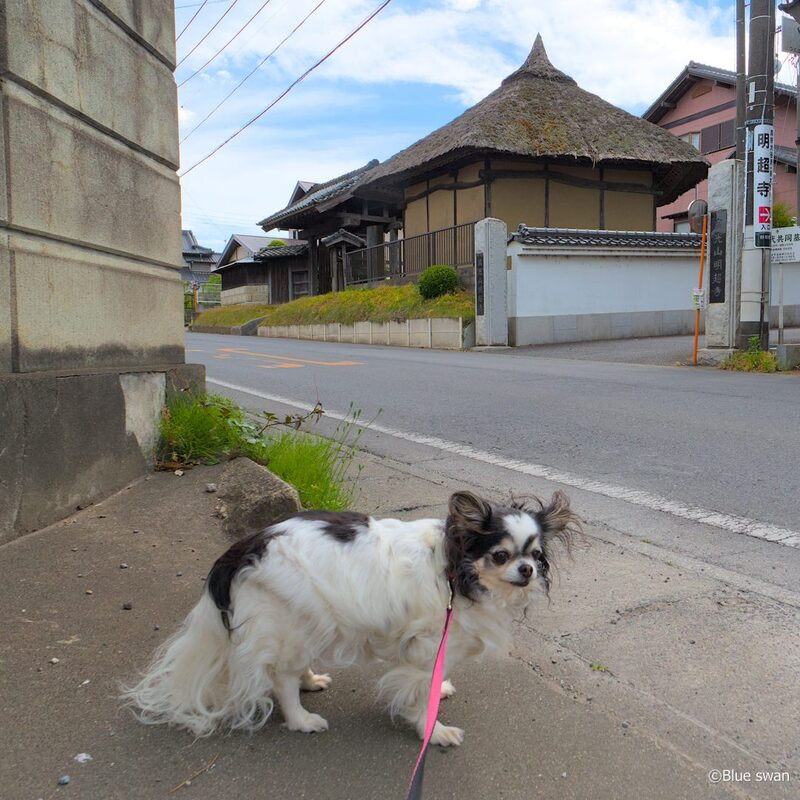
② I just arrived near Gokakudo.
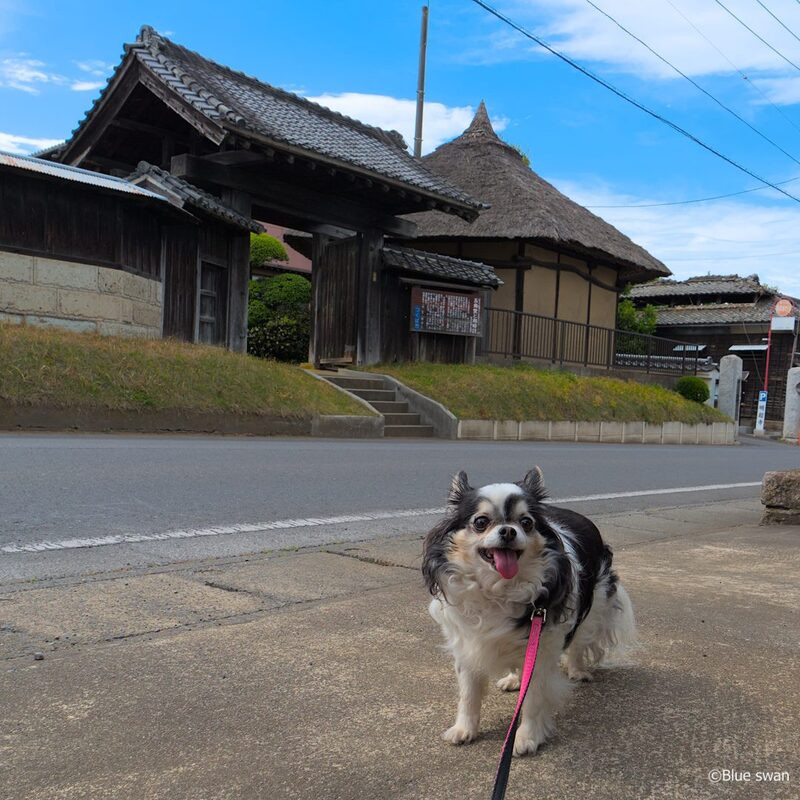
③ This is the main gate of the Iizuka family residence, where Gokakudo is located.
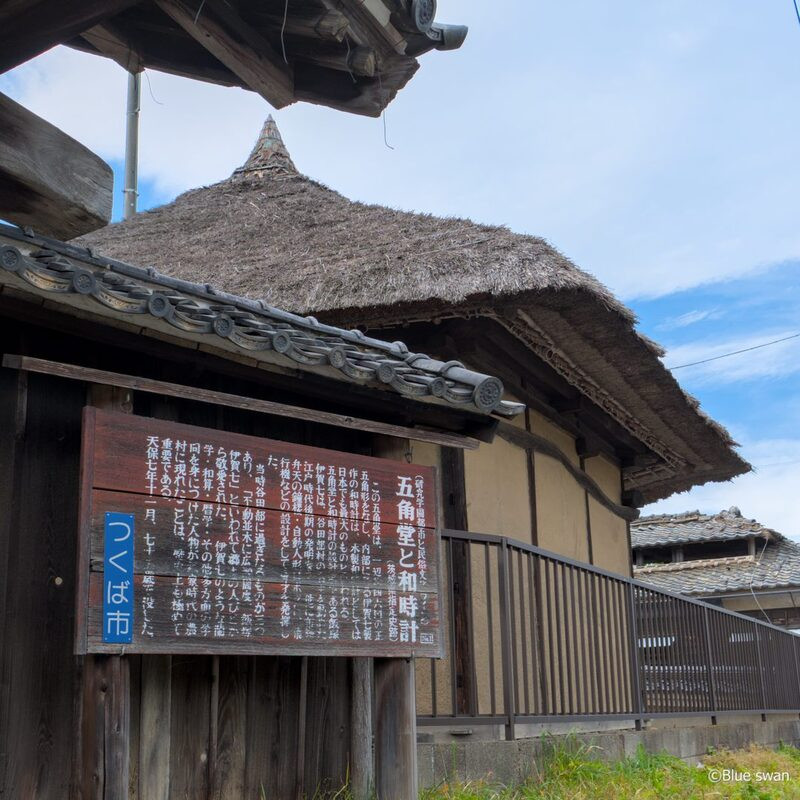
④ Next to the gate, there is an explanation board of Gokakudo.
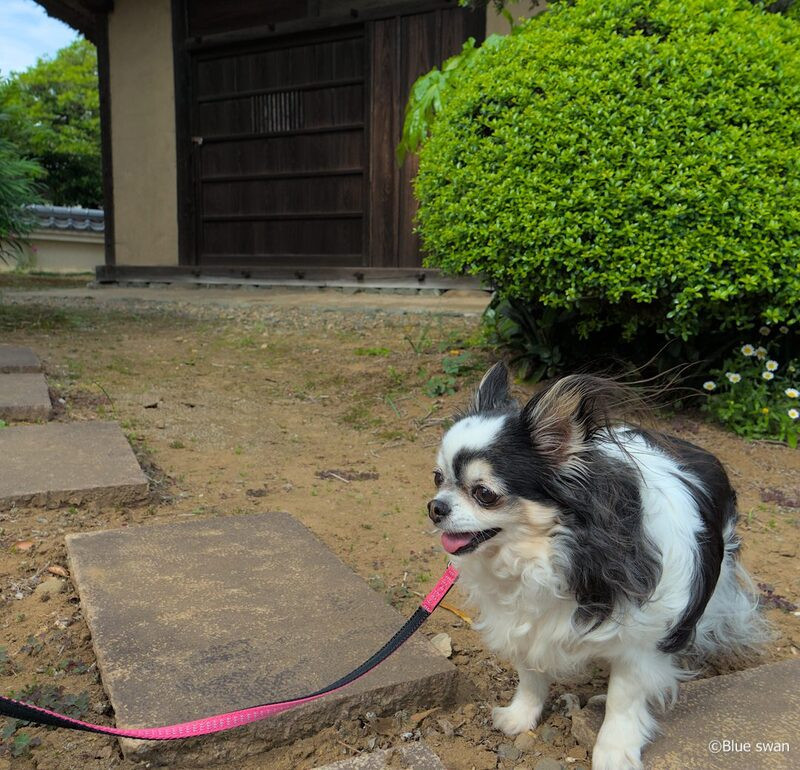
⑤ I am in front of Gokakudo.
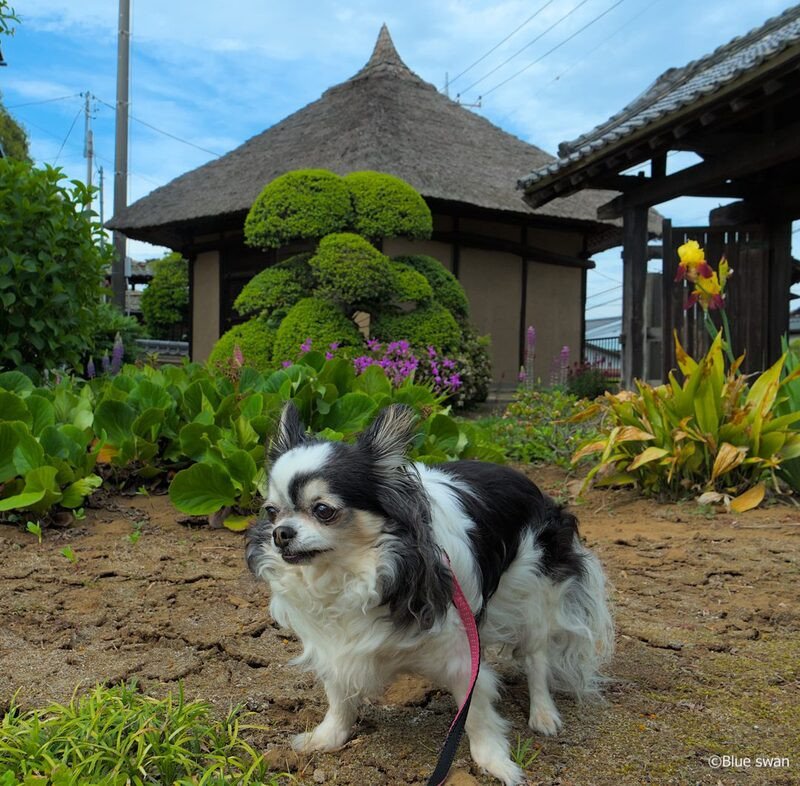
⑥ I am a little ways away from Gokakudo. Now you can see the entire building.
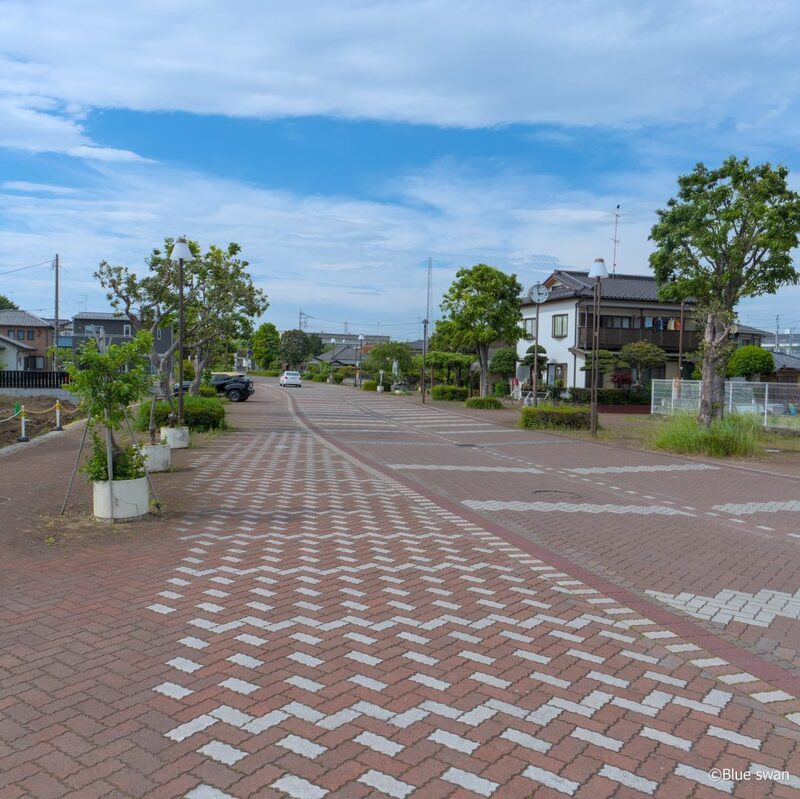
⑦ This is “Chitose Street”.
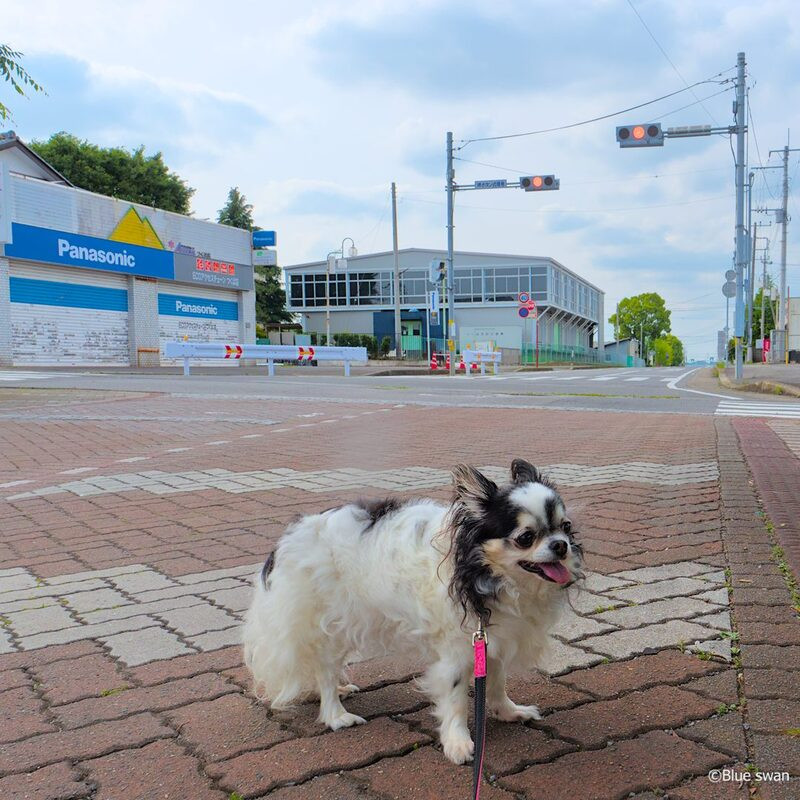
⑧ This is the end of Chitose Street.

⑨ Moss-rose Purslane (Matsuba Botan) are beautiful.
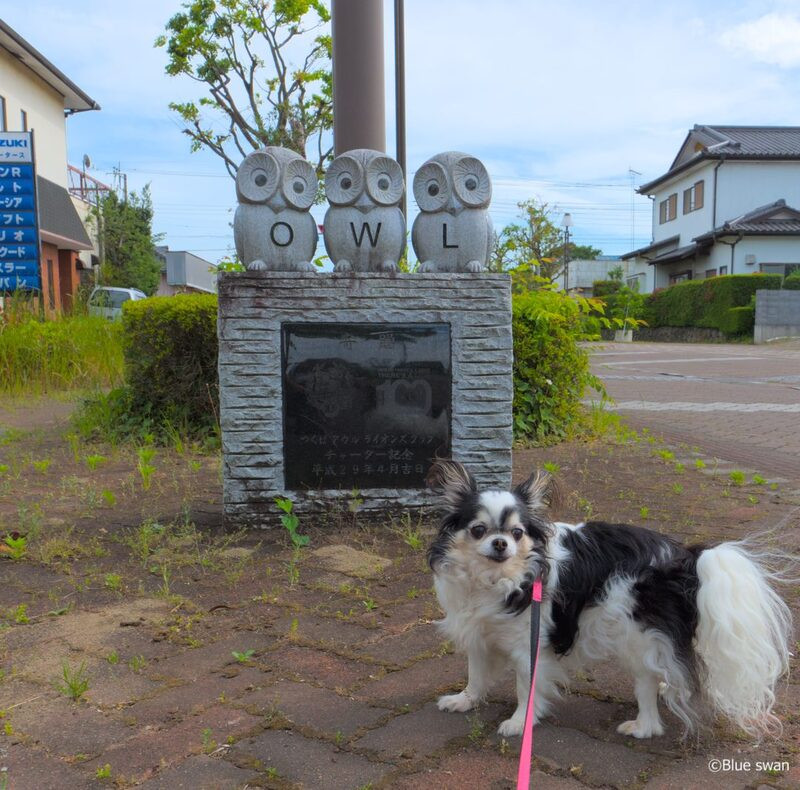
⑩ This is part of a new clock tower on Chitose Street. The owls are cute.

⑪ This is the center of Chitose Street. There is a monument made by Kizu Kazuo.
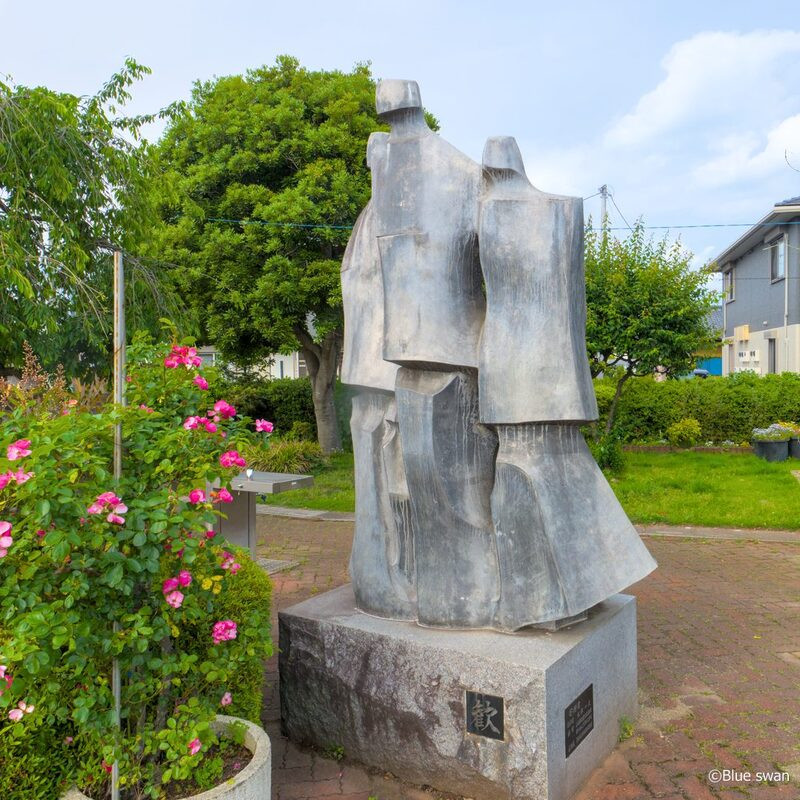
⑫ This is a close-up photo of the monument.
Yatabe means the Yatabe Domain. It was the only domain in Tsukuba City that survived until the end of the Edo period, though it was a very small one. "Too much" means "something too precious for one to be worthy of ", or "something that is too good to waste".
1) Fudo Namiki (不動並木 a row of pine trees in Fudo-cho)
In Yatabe, there used to be about 200 pine trees (Fudo Namiki) along the 200 m road in Fudo-cho.
An explanation board says,
"About 300 years ago, when Hosokawa Okimasa (細川興昌), the lord of the Yatabe Domain, moved his residence from Motegi in Tochigi Prefecture to Yatabe, he planted pine trees at this Yatabe area for Sankinkotai (参勤交代, a system under which feudal lords in the Edo period were required to spend every other year in residence in Edo).”
In 1957, Fudo Namiki became a natural monument designated by Ibaraki Prefecture.
In November 2003, someone who visited Fudo Namiki wrote, "Now only the last pine tree remains". But nowadays all of the pine trees have died.
In Yatabe, there used to be another famous pine tree on Chitose Street. But it also died in 1993.
2) Hirose Shutaku (広瀬周度)
Hirose Shutaku was born in 1782 as the eldest son of Shuhaku (広瀬周伯), a doctor of the Yatabe clan.
While also serving as a clan doctor, Shutaku pursued Dutch studies under his father, who had studied under Sugita Genpaku.
Shutaku was well versed in calligraphy and painting. In Hanare Kannon-do, there is a ceiling mural he painted when he was 16 years old.
3) Iizuka Igashichi (飯塚伊賀七)
Iizuka Igashichi (April 23, 1762 – December 24, 1836) was a village headman and inventor.
Igashichi's works include Gokakudo(a pentagonal pillar building), Fuse Benten Bell Tower, a Japanese clock (Based on a Western mechanical clock which was improved by incorporating unique Japanese technology), and an elaborate map called “Yatabe Ezu (1788)”. The map was as large as two tatami mats and was made before Ino Tadataka made the first map in 1800.
It is said that Igashichi also invented a large abacus, a sake-buying doll, a tea-serving doll, and a human-powered airplane, though none of them remain today.
Iizuka Igashichi is called "Karakuri Igashichi", but recently some people call him "Da Vinci of Tsukuba".
I visited the mysteriously-shaped Gokakudo. There used to be a Japanese clock in Gokakudo, but it has been moved to the local museum. Please note that Gokakudo is located on the residential land of the Iizuka family and cannot be entered inside.

① I am in front of “Yatabe Domain Jinya”, the only remaining structure of the Yatabe Domain. The building is now a public hall.

② I just arrived near Gokakudo.

③ This is the main gate of the Iizuka family residence, where Gokakudo is located.

④ Next to the gate, there is an explanation board of Gokakudo.

⑤ I am in front of Gokakudo.

⑥ I am a little ways away from Gokakudo. Now you can see the entire building.

⑦ This is “Chitose Street”.

⑧ This is the end of Chitose Street.

⑨ Moss-rose Purslane (Matsuba Botan) are beautiful.

⑩ This is part of a new clock tower on Chitose Street. The owls are cute.

⑪ This is the center of Chitose Street. There is a monument made by Kizu Kazuo.

⑫ This is a close-up photo of the monument.
